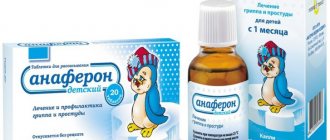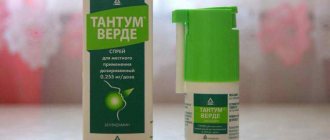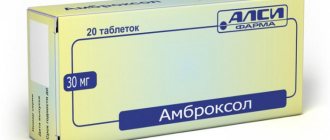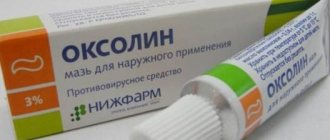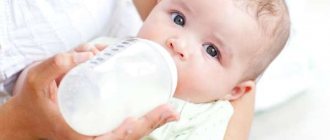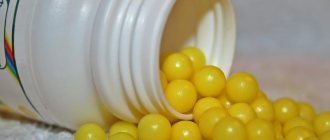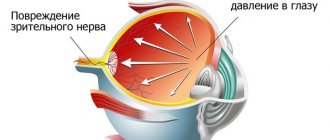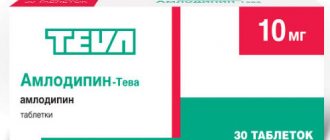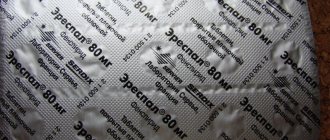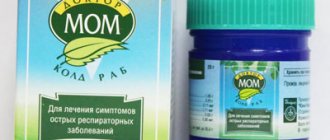"Kagotsel"
(Kagocel) is a Russian antiviral drug. Belongs to the group of interferon inducers that stimulate the production of its own interferon in the human body. The main active ingredient is a copolymer of gossypol (one of the pigments of cotton, a natural polyphenol that is toxic in its free form) with carboxymethylcellulose[1]
Chemical name: Sodium salt of the copolymer (1→4)-6-0-carboxymethyl - β-D-glucose, (1→4)-β-D-glucose and (21→24)-2,3,14,15, 21,24, 29,32-octahydroxy-23-(carboxymethoxymethyl)-7, 10-dimethyl-4, 13-di(2-propyl)- 19,22,26,30,31 - pentaoxageptacyclo [23.3.2.216 .20.05.28.08.27.09.18.012.17] dotriaconta-1,3,5(28),6,8(27), 9(18),10, 12(17), 13,15-decaene)
Content
- 1 History 1.1 Clinical trials
- 1.2 Awards
- 3.1 Pharmacodynamics
- 4.1 Prevention of influenza and other acute respiratory viral infections (ARVI)
Contraindications
Despite the high safety of the product, it is necessary to highlight contraindications :
- age up to 3 years;
- tendency to allergic reactions;
- lactose intolerance;
- hypersensitivity to the components of the drug.
With great caution, Kagocel is prescribed to children suffering from renal, endocrine, neurological and mental diseases.
For babies in these risk groups, use without a doctor's recommendation is not recommended.
In case of an overdose, headaches, abdominal pain, nausea, vomiting, and anxiety may occur. If the above symptoms occur, the patient's stomach is washed and activated charcoal is given at the rate of 1 tablet per 10 kg of weight.
Story
The drug was developed at the Research Institute of Epidemiology and Microbiology named after. N. F. Gamaleya of the Russian Academy of Medical Sciences under the leadership of Academician F. I. Ershov and V. G. Nesterenko. In 2000-2003. at the Influenza Research Institute of the Russian Academy of Medical Sciences in St. Petersburg and the Virology Research Institute named after. D.I. Ivanovsky RAMS in Moscow conducted the first clinical trials of the drug, and in 2003 the drug was registered under the international name “Kagocel”. In 2005, the production and distribution of Kagocel as an over-the-counter drug was established in pharmacies in Moscow and the Moscow region.
Clinical trials
Clinical trials of Kagocel were carried out by the Influenza Research Institute of the Russian Academy of Medical Sciences (St. Petersburg), the Virology Research Institute named after. D. I. Ivanovsky RAMS (Moscow)[2], Military Medical Academy named after. S. M. Kirova (St. Petersburg)[3]. The studies involved 1,100 patients. Randomized, blind, placebo-controlled, multicenter studies of the therapeutic efficacy of the drug were conducted.[3]
The results of clinical studies noted a 3.4-fold decrease in the incidence of influenza/ARVI in the main group compared to the control group; reduction in the number of complicated forms by 2 times, reduction in the circulation of respiratory viruses in groups, as well as the absence of side effects and good tolerability of the drug.
Awards
Kagocel is the winner of a number of Russian and international awards: BRAND OF THE YEAR / EFFIE 2011[4], winner of the All-Russian open competition of pharmaceutical industry professionals “Platinum Ounce” in the categories “Drug of the Year” and “Vector of the Year”[5]. During the nationwide voting for the People's Trust Award “Brand No. 1 in Russia 2012” in the “Antiviral Agent” category, Russians voted for Kagocel.[6]
Manufacturer: Kagotsela.
Manufacturer Kagotsela – . In the fall of 2011, she signed an agreement on the production and sale of the drug with, whose chairman of the board was A. Chubais.
The total budget of the project was estimated at more than 4 billion rubles, including co-financing from Rusnano in the amount of 1.2 billion rubles. Tatyana Golikova was involved in the promotion of this drug during her tenure as Federal Minister of Health
As a result, against the backdrop of an active marketing policy and aggressive advertising, sales of the antiviral drug skyrocketed. The aggressive marketing policy also included the distribution of materials signed by the management of the manufacturer, which contained threats to prosecute anyone who publicly expressed doubt about the effectiveness of the drug.
Pharmacological properties
Pharmacodynamics
The main mechanism of action of Kagocel is the ability to induce interferon production. Kagocel causes the formation in the human body of the so-called late interferon, which is a mixture of α- and β-interferons with high antiviral activity. Kagocel causes the production of interferon in almost all cell populations involved in the body's antiviral response: T- and B-lymphocytes, macrophages, granulocytes, fibroblasts, endothelial cells. When one dose of Kagocel is taken orally, the interferon titer in the blood serum reaches its maximum values after 48 hours [7]. The body's interferon response to Kagocel administration is characterized by prolonged (up to 4-5 days) circulation of interferon in the bloodstream. The dynamics of interferon accumulation in the intestine when Kagocel is taken orally does not coincide with the dynamics of circulating interferon titers. In the blood serum, interferon production reaches high values only 48 hours after taking Kagocel, while in the intestine the maximum interferon production is observed after 4 hours.
Pharmacokinetics
24 hours after administration to the body, Kagocel accumulates mainly in the liver, and to a lesser extent in the lungs, thymus, spleen, kidneys, and lymph nodes. Low concentrations are observed in adipose tissue, heart, muscles, testes, brain, blood plasma. The low content of Kagocel in the brain is explained by the high molecular weight of the drug, which makes it difficult to penetrate the blood-brain barrier. In the blood plasma the drug is found predominantly in bound form.
With daily repeated administration of Kagocel, the volume of distribution varies widely in all organs studied. The accumulation of the drug is especially pronounced in the spleen and lymph nodes. When taken orally, about 20% of the administered dose of the drug enters the general bloodstream. The absorbed drug circulates in the blood mainly in the form associated with macromolecules: with lipids - 47%, with proteins - 37%. The unbound portion of the drug is about 16%.
Excretion: the drug is excreted from the body mainly through the intestines: 7 days after administration, 88% of the administered dose is excreted from the body, including 90% through the intestines and 10% through the kidneys. The drug was not detected in exhaled air.
Kagocel, when prescribed in therapeutic doses, is non-toxic and does not accumulate in the body. The drug does not have mutagenic or teratogenic properties, is not carcinogenic and does not have embryotoxic effects.
The greatest effectiveness in treatment with Kagocel is achieved when it is prescribed no later than the 4th day from the onset of acute infection. For preventive purposes, the drug can be used at any time, including immediately after contact with the infectious agent.
Composition and release form
Kagocel is available in the form of tablets intended for oral administration. Each blister contains 10 tablets. The medicine is packed in a cardboard box. One tablet contains 12 mg of active substance.
The drug contains an active element - kagocel. It helps to improve the condition, eliminates unpleasant symptoms and makes you feel better when you have a cold.
It is worth noting! The constituent substances of the drug Kagocel are of natural origin. Due to the fact that it is based on no chemical components, allergic reactions and side effects almost never occur when taken.
Kagocel tablets for colds have additional components:
- Calcium stearate;
- Crospovidone;
- Povidone;
- Lactose monohydrate.
Indications for use
As a preventive and therapeutic agent for influenza and other acute respiratory viral infections (ARVI), as well as a therapeutic agent for herpes in adults.
As a preventive and therapeutic agent for influenza and other acute respiratory viral infections in children over 3 years of age.
Prevention of influenza and other acute respiratory viral infections (ARVI)
With a single use of the drug Kagocel, interferons circulate in the body for 1 week, which allows not only treatment, but also prevention of influenza and ARVI. For preventive purposes, Kagocel can be used at any time, including immediately after contact with a source of infection.
Kagocel dosage regimen: Prevention of influenza and ARVI in children over the age of 3 years is carried out in 7-day cycles: two days - 1 tablet once a day, 5 days break, then repeat the cycle. The duration of the preventive course is from one week to several months.
Prevention of influenza and ARVI in adults is carried out in 7-day cycles: two days - 2 tablets once a day, 5 days break, then repeat the cycle. The duration of the preventive course is from one week to several months.
Treatment of influenza and other acute respiratory viral infections (ARVI)
Kagocel dosage regimen: Children aged 3 to 6 years are prescribed 1 tablet 2 times a day in the first two days, and one tablet 1 time a day in the next two days. A total of 6 tablets per course, course duration - 4 days.
Children over 6 years of age are prescribed 1 tablet 3 times a day in the first two days, and one tablet 2 times a day in the next two days. A total of 10 tablets per course, course duration - 4 days.
Adults are prescribed in the first two days - 2 tablets 3 times a day, in the next two days - one tablet 3 times a day. A total of 18 tablets per course, course duration - 4 days.
A/H1N1
Kagocel is recommended by the Ministry of Health and Social Development of the Russian Federation for the prevention of influenza in adults and the treatment of adult patients with moderate and severe forms of influenza caused by the Russian Federation A/H1N1 virus. Temporary guidelines “Treatment and prevention regimens for influenza caused by highly pathogenic type A H1N1 virus for adults.”
Kagocel is an antiviral agent.
Kagocel is an antiviral drug that is used for the prevention and treatment of colds and flu, as well as for the treatment of herpes.
According to statistics, Kagocel is one of the five best-selling drugs in Russia. Why then is this actively promoted drug not on the list of medicines approved for use by the WHO?
In the medical community, controversy over this drug has not subsided for many years. A significant portion of doctors believe that taking Kagocel causes more harm than good. However, this dubious drug in Russia is included in the list of vital and essential drugs and is approved for use by the Ministry of Health.
Drug safety
Kagocel substance is an original patented domestic medicinal product, which is a heteropolymer obtained from purified components of plant raw materials (carboxymethylcellulose and gossypoacetic acid) by chemical synthesis. During synthesis, the gossypol molecule undergoes chemical modification and is tightly bound to cellulose polymer molecules by covalent bonds. Thus, gossypol is chemically modified and is immobilized in the preparation, which leads to a significant reduction in its toxicity.
During metabolism in the body, gossypol molecules are not released from the molecular complex in free form.
Regulatory documentation for Kagocel® provides for strict control over the absence of unbound gossypol in the substance and in finished tablets.
Conducted in accordance with the requirements of the Ministry of Health and Social Development of the Russian Federation when registering a medicinal product, studies of the acute and chronic toxicity of the substance and drug Kagocel on laboratory animals showed that its administration by mouth in doses many times higher than therapeutic did not lead to death or any significant deviations from the norm in condition of animals.[8]
According to the generally accepted classification of toxic substances in toxicology (according to Hodge and Sterner), Kagocel belongs to the class of slightly toxic substances, for which it has been established that administration of the drug orally to experimental animals in a dose of up to 5 g/kg body weight does not cause death of the animals. A study of subchronic toxicity in young rat pups showed that administration of the Kagocel substance in doses of up to 100 mg/kg body weight for 4 weeks did not cause pathological changes in experimental animals[8].
In the course of special studies of the possible negative effect of Kagocel on reproductive functions when assessing the effect on the course of pregnancy in rats and on postnatal development, it was found that Kagocel at a dose of 100 mg/kg body weight, administered daily throughout pregnancy, did not show a negative effect on the course of pregnancy, intrauterine development of embryos and postnatal development of offspring. In studies of reproductive toxicity on rats of both sexes, it was shown that Kagocel administered into the stomach in doses of up to 100 mg/kg body weight did not have a negative effect on the generative function of animals, recorded by the number of pregnancies that occurred, and did not affect the development of offspring, as in during the prenatal period and during postnatal development[9].
During the period from 2000 to 2012, repeated clinical placebo-controlled studies conducted under the permission of the Ministry of Health and Social Development of the Russian Federation involving a total of more than 2000 both adult patients and children aged 3 years and older did not reveal any side effects when using the drug Kagocel. Taking into account the results of numerous preclinical and clinical studies of the Ministry of Health and Social Development of the Russian Federation, Kagocel tablets are approved for use by children aged 3 years and older and an over-the-counter form of dispensing from pharmacies has been established for it.
For more than 10 years of free circulation on the pharmaceutical market, the drug Kagocel has been received by more than 5 million patients. To date, health authorities and the manufacturer, which carries out pharmacovigilance of the drug produced and distributed as required by the Ministry of Health and Social Development, have not registered a single case of a serious adverse reaction. Kagocel has demonstrated a high safety profile and has received wide recognition from both patients and medical workers in Russia, Ukraine and Belarus. .
According to the drug production technology used, the content of chemically modified bound gossypol in the Kagocel substance does not exceed 3% by weight. Thus, one tablet of Kagocel* (contains 12 mg of substance) contains less than 0.36 mg of bound gossypol. Taking into account the maximum recommended dose of the drug Kagocel® for therapeutic purposes for an adult (2 tablets 3 times a day), the daily dose of the drug of the associated low-toxic derivative of gossypol contains no more than 2.16 mg.
The European Food Safety Authority (EFSA)[10] has set the minimum ADI and TDI minimum values for free gossypol for possible adverse effects on spermatogenesis at 0.12 mg/kg and 0.35 mg/kg body weight, respectively. Thus, the permissible harmless daily intake of free gossypol into the body is on average from 8.4 to 24.5 mg for an adult. As stated above, the maximum daily dose of Kagzoel based on bound gossypol is 2.16 mg or 0.33 mg/kg body weight of an adult. Consequently, in terms of gossypol (which, as stated above, is found in the Kagocel drug in a non-toxic form), the amount of it that can enter the body per day when taking tablets of the drug is at least 4 times lower than the daily dose allowed by international standards free gosypol.
Therefore, the use of Kagocel is safe from the point of view of negative effects on the reproductive functions of women and men.
Kagocel during pregnancy and breastfeeding – can I take it?
Based on the hypoallergenicity and non-toxicity of the active component, and also taking into account the absence of side effects of the drug, many patients believe that Kagocel can be taken during an interesting situation, both for the purpose of prevention and during illness. Understanding this issue, let us turn to the results of laboratory analytics when studying the effect of the drug on a living organism.
Following the unanimous opinion of leading immunologists, as well as paying attention to the instructions of the drug manufacturer, the drug is not recommended for use during pregnancy. There is a hypothesis about the occurrence of a detrimental effect of the active immunoglobulin on the organic tissue of the fetus. This threatens intrauterine immune failures of the small organism, which can provoke possible complications in the future. These concerns are associated with the ability of the drug Kagocel to penetrate the placental barrier.
The concentration of the drug in breast milk has been confirmed by clinical tests. Such milk is harmful to the child, since it poses a threat of developing immune failures in the fragile body.
Considering the data obtained, the vast majority of doctors recommend that patients refrain from using Kagocel during pregnancy and breastfeeding. If such recommendations cannot be avoided, short-term breast weaning is allowed while taking the course of treatment. In such cases, an interval must be maintained - from the moment you take the first tablet until a week after the end of the course, you cannot feed the baby with breast milk.
Is it possible to combine treatment with Kagocel and alcohol?
Taking medication and alcoholic beverages at the same time is strictly prohibited. Under the influence of ethyl alcohol, when stimulating the produced interferons, complications may arise in the form of severe forms of psychosomatic nervous disorders. With alcohol abuse, these disorders can become irreversible.
Notes
- Induction of endogenous interferons in the treatment of chronic resistant chlamydia. A. E. Nagorny. Dermatology and Venereology No. 3, 2010. https://www.nbuv.gov.ua/portal/Chem_Biol/dtv/2010_3/nagorni.pdf.
- G. N. Karetkina. Current aspects of the prevention and treatment of influenza in modern conditions. www.infomedfarmdialog.ru/files/Infekc/2009/tezis/src/13.doc
- ↑ 12
G. N. Karetkina. The use of interferon inducers for the treatment and prevention of influenza and other acute respiratory viral infections. https://www.lvrach.ru/doctor/2009/10/10861672/ - Winners of “BRAND OF THE YEAR / EFFIE” 2011 https://brandgoda.ru/laureats/pobediteli-brend-goda-effie-2011.html.
- All-Russian open competition for pharmaceutical industry professionals “Platinum Ounce” https://www.uncia.ru/
- Brand No. 1 in Russia. https://narodnayamarka.ru/news/2012/itogi-golosovaniya-za-marki-1-v-rossii-2012/
- Encyclopedia of drugs. Register of Medicines of Russia. https://www.rlsnet.ru/tn_index_id_21836.htm.
- ↑ 12
Report “On the study of the general toxic effect of Kagocel on immature rats.” VNII Chemical-Pharmaceutical Institute (TsKhLS-VNIHFI), 2012. - Report “On the study of the embryotoxic and teratogenic effects of the drug Kagocel on the postnatal period of offspring development and on the generative function of rats.” State Research Institute of General Pathology and Pathophysiology, 2012
- European Food Safety Authority. The EFSA journal (2008) 908, 1-55.
Registration numbers
tab. 12 mg: 10 pcs. Р N002027/01 (2019-11-07 – 0000-00-00)
Experimental determination of suitable drugs:
- NOON
- AMIXIN
- AMAZON
- TILORON
- LAVOMAX
- ALLOKIN-ALPHA
- ARBIDOL
- NOON
- NOON
- ARPEFLUE
- ACTIPOL
- PHENYLDIMETHYLOODYRAZOLONE
Add a comment Cancel reply
ATX code for KAGOCEL
J05AX (Other antivirals)
Experimental determination of suitable drugs:
- POLUDAN 10.007 (Antiviral and immunomodulatory drug. Interferon synthesis inducer), composition...
- AMIXIN 10.007 (Antiviral and immunomodulatory drug. Interferon synthesis inducer), composition...
- AMIZON 10.007 (Antiviral and immunomodulatory drug. Inducer of interferon synthesis), composition...
- TILORON 10.007 (Antiviral and immunomodulatory drug. Interferon synthesis inducer) Low molecular weight inducer…
- LAVOMAX 10.007 (Antiviral and immunomodulatory drug. Interferon synthesis inducer), composition...
- ALLOKIN-ALFA 10.007 (Antiviral and immunomodulatory drug. Interferon synthesis inducer) Antiviral agent…
- ARBIDOL Clinical and pharmacological groups 10.001 (Antiviral drug) 10.007 (Antiviral and immunomodulatory drug. Interferon synthesis inducer) Pharmacological…
- POLUDAN 10.007 (Antiviral and immunomodulatory drug. Interferon synthesis inducer), composition...
- POLUDAN 26.028 (Antiviral and immunomodulating drug for topical use in ophthalmology. Inducer…
- ARPEFLUE 10.007 (Antiviral and immunomodulatory drug. Interferon synthesis inducer), composition...
- ACTIPOL 26.028 (Antiviral and immunomodulatory drug for topical use in ophthalmology. Inducer…
- PHENYLDIMETHYLOODYRAZOLONE 10.007 (Antiviral and immunomodulatory drug. Interferon synthesis inducer) Antiviral drug,…
Kagocel - instructions for children over 2 years old
According to the instructions, Kagocel is not used to treat children over 2 years of age. Young patients are prescribed:
- Orvirem is a syrup with rimantadine. Prescribed to children over 1 year of age with the flu.
- Anaferon is a drug based on antibodies to human interferon gamma. The tablet is dissolved in a teaspoon of boiled water and can be taken from 1 month of life. Effective for acute respiratory viral infections, influenza, and intestinal infections.
- Cytovir-3 is available in powder form for solution preparation. Allowed for use from 1 year. The advantage of the drug is its use in children with atopic dermatitis. Prescribed for viral infections.
- Tamiflu is a flu medicine based on oseltamivir, prescribed from 1 year of age. Release form: capsules and powder for preparing a suspension.
Before taking the medicine, it is recommended to consult a pediatrician to clarify the diagnosis. The most effective use of these drugs is in the first 1.5 days from the onset of the disease.
Reviews of Kagocel and instructions for use
Kagocel is an interferon inducer, that is, it stimulates or provokes its release. This antiviral drug is prescribed for many diseases, including influenza. However, the influenza virus has a special gene that can inhibit the release of interferon in the cell.
Why, in this case, take a medicine that obviously won’t help? To get rid of money? There are medications that contain interferon, which will certainly help with the flu - for example, Viferon.
I did not take this drug for the flu. That season, a small herpes broke out - so I didn’t understand whether Kagocel worked, or whether remission came on its own. It would be better to spend money on acyclovir ointment - it clearly helps faster.
Having read some of the reviews, I would like to comment on something. I think the benefits of the medicine are very doubtful if the temperature from 38.5 normalized in 3-4 days.
Most likely, natural recovery takes place here, which occurs without such drugs. I think the drug is effective only against certain strains of viruses, and the advertising campaign that has now developed around it is not justified.
Analogs
Doctors identify a number of analogues that can replace the drug Kagocel:
- Anaferon;
- Arbidol;
- Ingavirin;
- Amiksin;
- Ergoferon;
- Cycloferon;
- Cytovir-3;
- Remantadine and others.
Kagocel, Anaferon or Arbidol - which is better?
Anaferon and Kagocel differ from Arbidol in that they have powerful immunomodulatory properties and activate the production of endogenous interferon by the body. Arbidol acts on the hemagglutinin protein, which leads to the elimination of viruses.
The drug Kagocel has many analogues. It is better to find out which drug to prefer from your doctor.
Anaferon and Kagocel are often prescribed for the prevention of influenza and ARVI, while Arbidol is more often used to treat an existing virus. Arbidol is a domestic drug, so its price is quite affordable for most patients.
Arbidol has a minimal number of side effects, but unlike Kagocel, it is included in List B (a register of drugs that are prescribed with extreme caution, since complications may arise when used without careful medical supervision), which in itself can alert the patient
Ingavirin
Ingavirin is a fairly popular drug with an antiviral effect, which is widely used in winter to treat ARVI. The mechanism of its action is the effect of biologically active components on the processes of reproduction and renewal of pathogenic microorganisms. The drug also has a strong anti-inflammatory effect.
Ingavirin is produced in capsule form. The drug is not recommended for use for the prevention of acute respiratory viral infections, so it is significantly inferior to Kagocel, which is effective in preventing the occurrence of respiratory infections.
Amiksin
According to the mechanism of action, Amiksin is similar to the drug Kagocel, since both of them are synthetic interferon inducers. Amiksin differs only in that the therapeutic effect after administration occurs after 4-24 hours. Doctors recommend using it for urgent conservative treatment in adults.
The disadvantage of Amiksin is that it is prescribed to children from 7 years of age, while Kagocel is prescribed to children from the age of three.
Ergoferon
Ergoferon is a drug with a wide spectrum of action. It contains anti-inflammatory and antihistamine substances. The drug has a powerful antiviral and immunomodulatory effect. A distinctive feature of Ergoferon from Kagocel is that it can be used by children aged 6 months and older. Also, Ergoferon’s list of indications is more extensive than Kagocel’s.
The average price of Ergoferon is 350-400 rubles.
https://youtube.com/watch?v=4MYXXE3xpE0
Cycloferon
Cycloferon is a low-molecular-weight interferon inducer with immunomodulatory and anti-inflammatory properties. The drug can be used effectively for herpes, influenza and acute respiratory viral infections in the early stages of their appearance (the first 5 days).
Cycloferon is involved in the synthesis of gamma globulin and also improves the human immune system. In terms of effectiveness, it is no worse than the drug Kagocel, but costs 30-40 rubles less.
Children are allowed to take Cycloferon from the age of 4 years.
The drug is contraindicated for women during pregnancy and lactation, and for patients with hypersensitivity to the components.
Possible side effects are allergic reactions.
Tsitovir-3
Tsitovir-3 has a mechanism of action similar to Cycloferon, but has a higher cost. This is due to the fact that Cytovir-3 contains vitamin C. Thanks to ascorbic acid, the immune system is activated.
The drug is produced in the form of capsules and powder for preparing an oral solution for children. It comes in two flavors - strawberry and orange. The solution is intended for children from 1 year.
The drug is contraindicated for patients with diabetes, women during pregnancy, as well as people with individual intolerance to the components.
The course of prevention and treatment should not exceed 4 days. If necessary, the course can be repeated after 20-30 days.
Remantadine
Remantadine is a rather outdated antiviral drug. Its mechanism of action is to prevent the virus from entering the body's cells. The drug is prescribed to children from 7 years of age and adults. The indication for use is influenza at an early stage, and Remantadine is also used for the prevention of tick-borne viral encephalitis.
The price of the drug is 35-50 rubles.
Mechanism of action
People are interested in how the medicine has an immunostimulating effect. The human body secretes a number of proteins called interferons to attack viruses. They, in turn, make the entire immune system work, which consists of:
- lymphocytes;
- macrophages;
- granulocytes, etc.
The protein makes almost all immune cells work. Kagocel acts specifically on interferon. After taking the medicine, the amount of interferon increases sharply. Already on day 2, the amount of this substance in the body is sufficient to activate all immune cells.
The immunostimulating effect continues even after discontinuation of use. The concentration of the drug in the body remains at a high level for 5 days, this in turn directly stimulates the immune system. Interferon production increases in absolutely all cells that are associated with antiviral immunity. Taking Kagocel only a few days is enough to achieve a positive result.
It is worth noting that if a person follows the dosage, the medicine rarely causes side effects. Also, during administration there is no toxic effect on the body and individual organs, so the medicine can be used even by children.
Kagocel does not act as quickly as we would like. A sufficient dosage in the body can only be achieved on day 2. The advantage of the tablets is that they are eliminated within 5-7 days, so they have a stimulating effect even after discontinuation.
Interaction of Kagocel with other drugs
This medicine goes well with any antiviral therapy and does not create any dangerous tandems. Kagocel interacts with other drugs according to the principle of additivity: its effect is additive with the influence of other drugs, without changing either the degree of this influence or the quality. Kagocel can be prescribed together with antibiotics, antipyretics and antihistamines without fear of harm to health. But it is still better to do this no later than 3-4 days after the onset of severe symptoms of a cold.
Side effects
Side effects are rare. They are usually associated with an allergic reaction. Also, sometimes poisoning with any element occurs (this happens when the recommended dosages are significantly exceeded). The following side effects are identified:
- allergy;
- nausea;
- vomit;
- weakness.
The drug does not negatively affect the immune system. It is not a hormonal drug and does not change hormonal levels in any way.
If side effects occur, you should consult a doctor. He will either stop the medication or adjust the dosage. It is best to replace the drug. Analogues that act in a similar manner can be used.
It is worth understanding that side effects occur very rarely. In most cases, they are associated with the individual characteristics of the body. Kagocel is well tolerated. During the recommended period of use, it does not harm the human body in any way. For the treatment of most viral diseases, only 4 days are enough.
What's the result?
You can confidently answer the question: are Kagocel tablets an antibiotic or not, that this drug is not an antibiotic. In addition, the medication is not suitable for treating all human diseases. It is used to treat viral infections. The tablets have an immunostimulating effect. They are effective even with short-term treatment.
You should not self-medicate. Kagocel is not a unique drug. If the disease manifests itself, it is best to consult a specialist. Self-medication of colds is carried out only with complete confidence in the diagnosis. If within 5 days of self-therapy it was not possible to achieve results, you need to see a therapist.
Doctors often prescribe this drug. People recover through its use. This means the pills really work. For people, the mechanism of action is unclear, so you can come across a lot of myths.
Antiviral drugs and planning (in men)
Dear girls! Happy Friday everyone and happy coming of Spring! Let everything work out for us at this wonderful time of year!) My husband and I finally decided that it was time to start taking active steps to plan for our second baby.
This is a victory in itself for me, because my husband didn’t dare for a long time, but now he wants to! I completed my health check, took vitamins, and in March we decided to actively try. But as always, according to the law of meanness, the husband caught an acute respiratory infection or acute respiratory viral infection (they did not go to the doctor.
